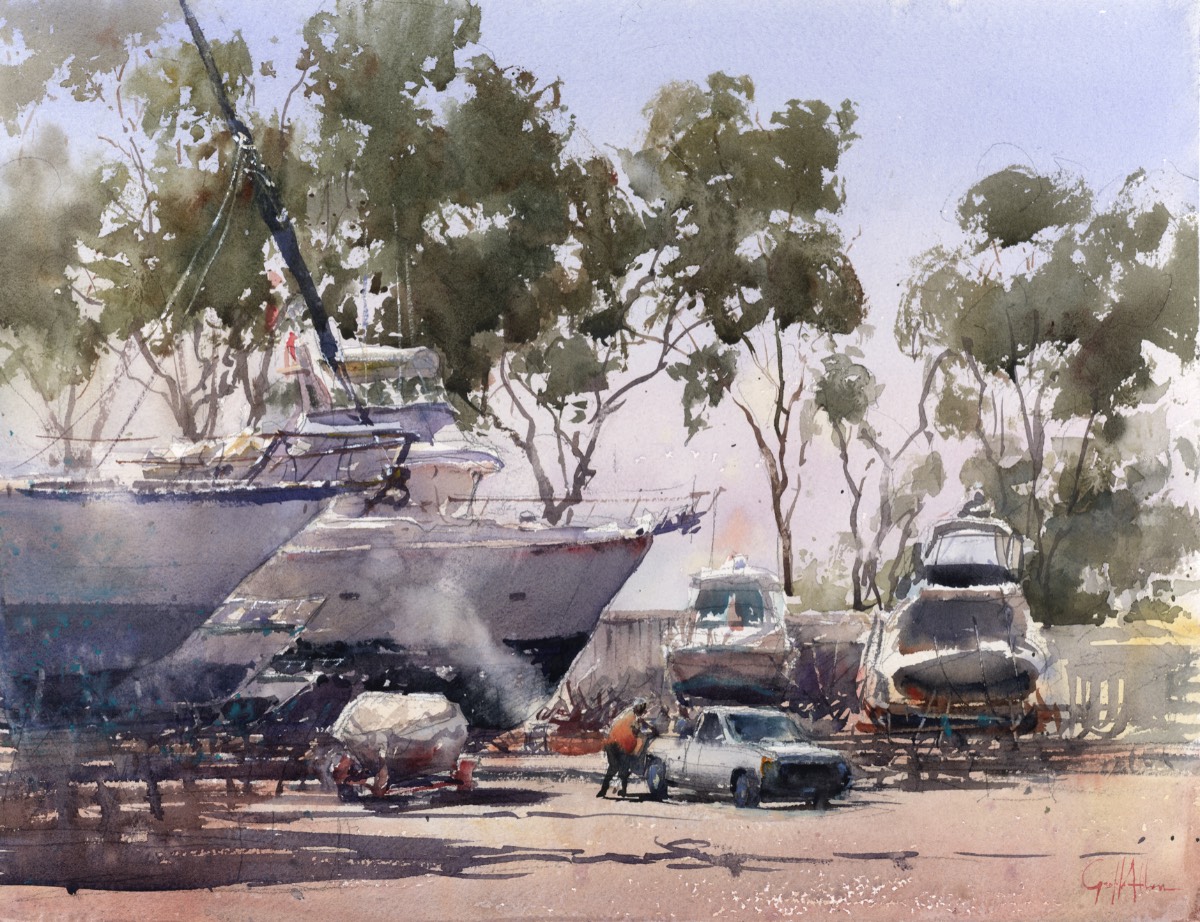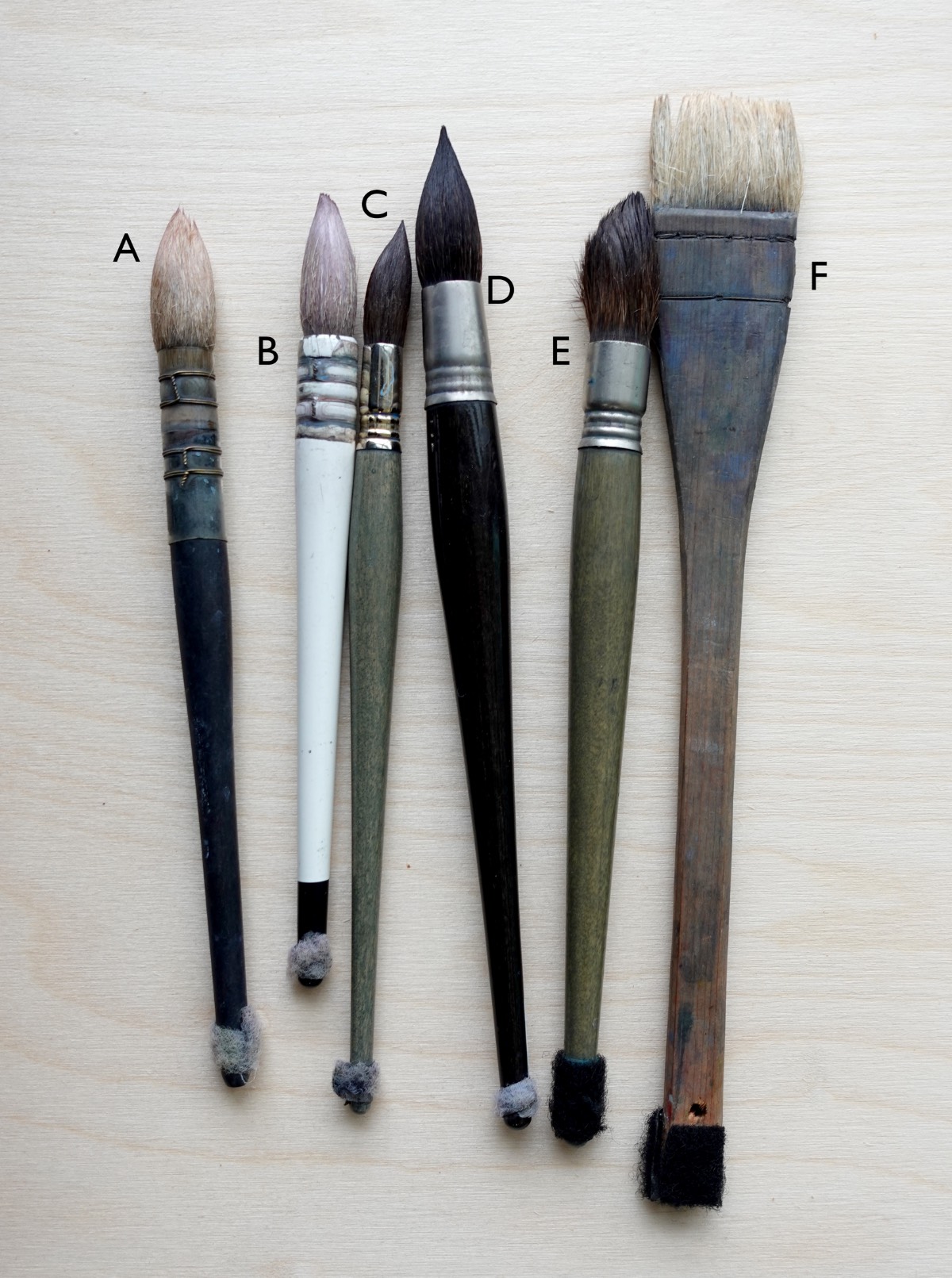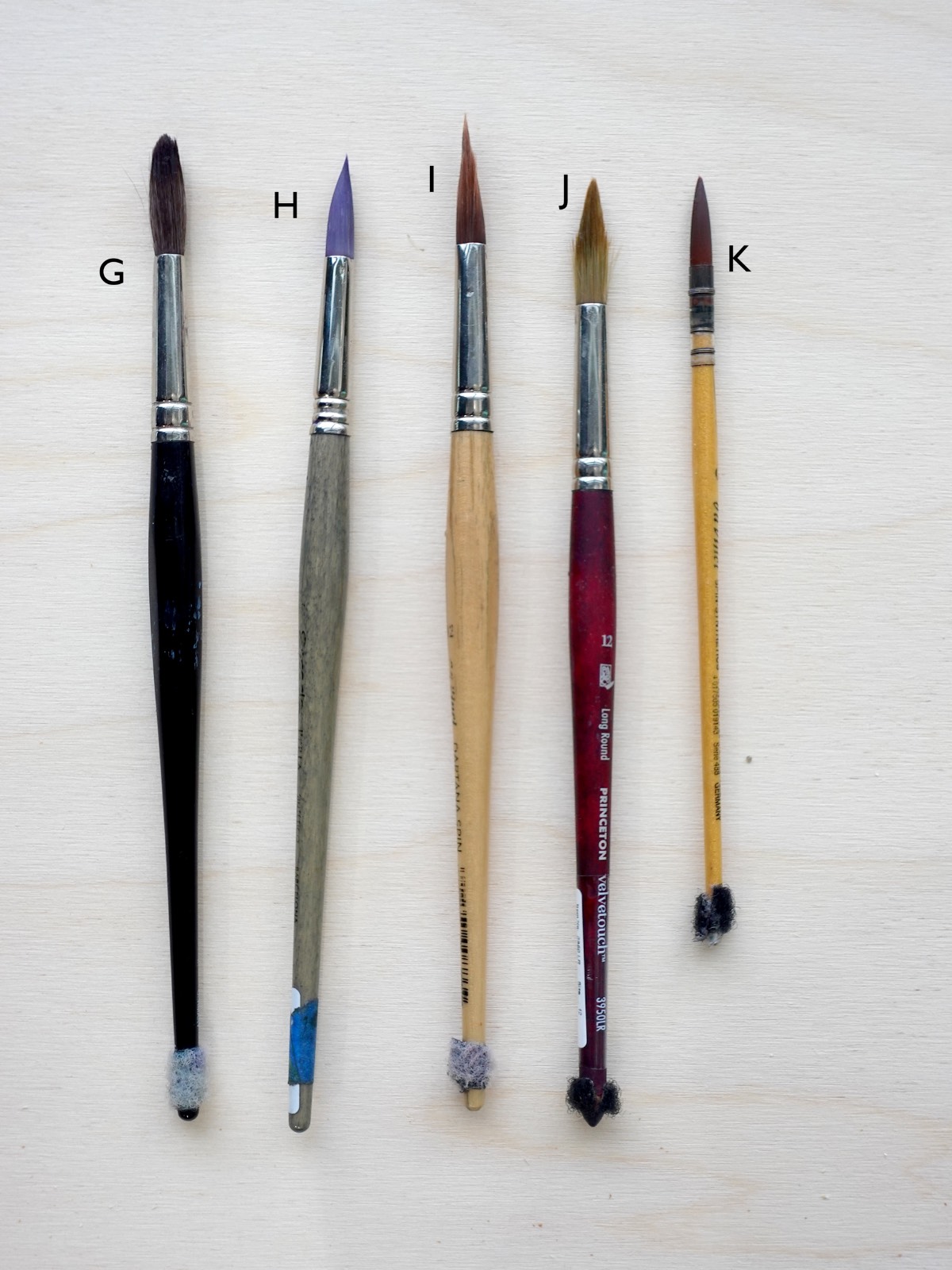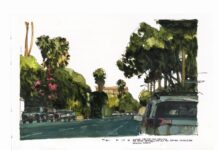By Geoff Allen

The essential three types of brushes I use are quill mops (my workhorses are medium-size brushes with a point), specialty brushes, and assorted used brushes. Of course, brushes are only as good as how we use them. Think about your brushstrokes like music. Who wants to listen to the same note over and over again? Create variety in strokes by changing direction and angles.
Some plein air artists limit the number of brushes they use, which is a good idea as they can add weight to your plein air pack. However, I never know what scene is going to catch my fancy, and I like opening a quiver of brushes in all sorts of sizes that do all sorts of things. Brushes can be anything that assists you in manipulating paint or the paper surface. There are no bounds, from using old credit cards to pine needles. Once I forgot a pencil and I used a charred stick from a beach fire.
On the handles of my brushes you might notice Velcro, which allows me to hang them off my setup shelf or palette. Also, I denote specialty brushes for trees or good splattering ones with blue tape. Before I start painting, I always give them a dip into water to soften any dried paint on the brush tip. I occasionally give my natural hair brushes a replenishing soak in olive oil soap by Escoda.

A Tintoretto Aquasoft, goat hair (Jackson Art Supplies)
B Silver Brush Atelier Quill, goat hair
C Escoda Aquario Gold, squirrel
D Escoda Ultimo synthetic
E Escoda Aquario, squirrel
F Holbein Series 1220 hake brush, goat
Many beginning watercolorists don’t see the need to get a mop brush initially, because it is the most expensive acquisition. However, it is essential for creating beautiful washes. With a good mop, you can move lightning fast, getting down a wash quickly. Think of a quill mop as a water shovel with a reasonably good point. The more water that you can get into that wash, feeding your bead (the mound of accumulated mixture at the bottom of the wash) and sinking into our paper, the more time you will have to play around in that wet area.
I usually load up two or three mops before I start my wash with different colors. They hold lots of water and are soft enough that if I make a quick stroke I can get some nice broken strokes and bits of white paper. Be bold and be quick with a light touch and you’ll see the “bits” appear for you, too. Soft brushes give you the ability to shape them with either your hand or by pressing them into your palette.

G. Da Vinci da Casaneo 12 round
H. Escoda Perla 12 round
I. Da Vinci Dartana-Spin 12
J. Princeton Velvettouch 12 round
K. Da Vinci Spin-Synthetic 0 or 1
Each brush, depending on how I use them, gives a slightly different feel to a piece. For small calligraphic mark-making or detail, I reach for the Perla or Dartana. The Casaneo (like other softer brushes) is easily formed by hand or palette, and I find I can get a very thin line, or if I flip it 90 degrees, a wide stroke. The Spin-Synthetic doesn’t hold as much water, and I use this for broken stroke applications. The Velvettouch does the same thing at a lower price point.

L. palette knife
M. Escoda Perla 6
N. Escoda Perla spotter
O. Royal & Langnickel synthetic fan
P. Tintoretto 1408 Synthetic liner
Q. Blick natural hair
R. 1/4” Royal & Langnickel 6085 sword
S. Silver Black Velvet round
T. Rosemary & Company extended point
U. Cheap Joe’s Hypo Oiler Boiler
Specialty brushes allow you to express yourself creatively when dealing with the challenges that confront you, by generating a variety of marks on your paper. Any palette knife with a point and straight edge will do to scrape off paint. I use these smaller Escoda Perla brushes at the end of my paintings for the details. The spotter doesn’t hold much mixture and it is great for broken strokes. This synthetic fan does palms magnificently, and on its edge creates a nice broken organic look. I would be lost without my Tintoretto liner; it does everything. I forcefully splay out the bristles of natural-hair brushes “Q” and “R” (a sword type) on the palette to use in foliage mark making. I use “S” for my signature, and “T” for lines and tiny birds. The Hypo Oiler Boiler is a clean water source that I use to hose down my palette before a plein air session. It also can hose off a passage before it dries or create a smooth fog bank.

In the age of recycling I highly recommend purchasing assorted used brushes off eBay. Used brush are great to experiment with and liberate you from the preciousness of an expensive brush. In the farthest brush on the righthand side, you can see I inserted pins into its bristles to splay the hairs, making it my indispensable tree brush.
Watch top watercolor artists put their brushes into action during Watercolor Live January 22-24, 2025, with an optional Essentials Techniques Day on January 21!







